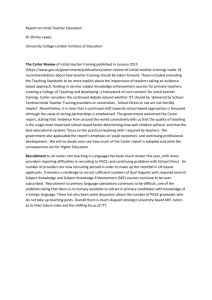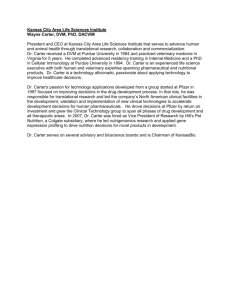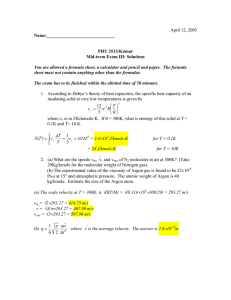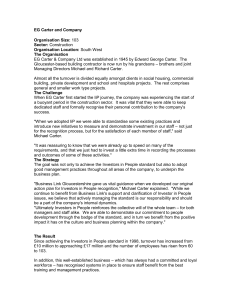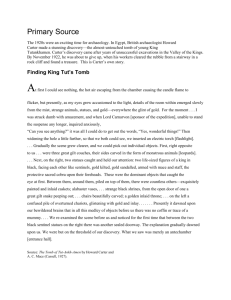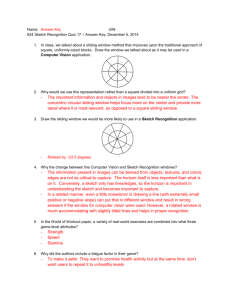Physics 410 Spring 2008 HW#1
advertisement
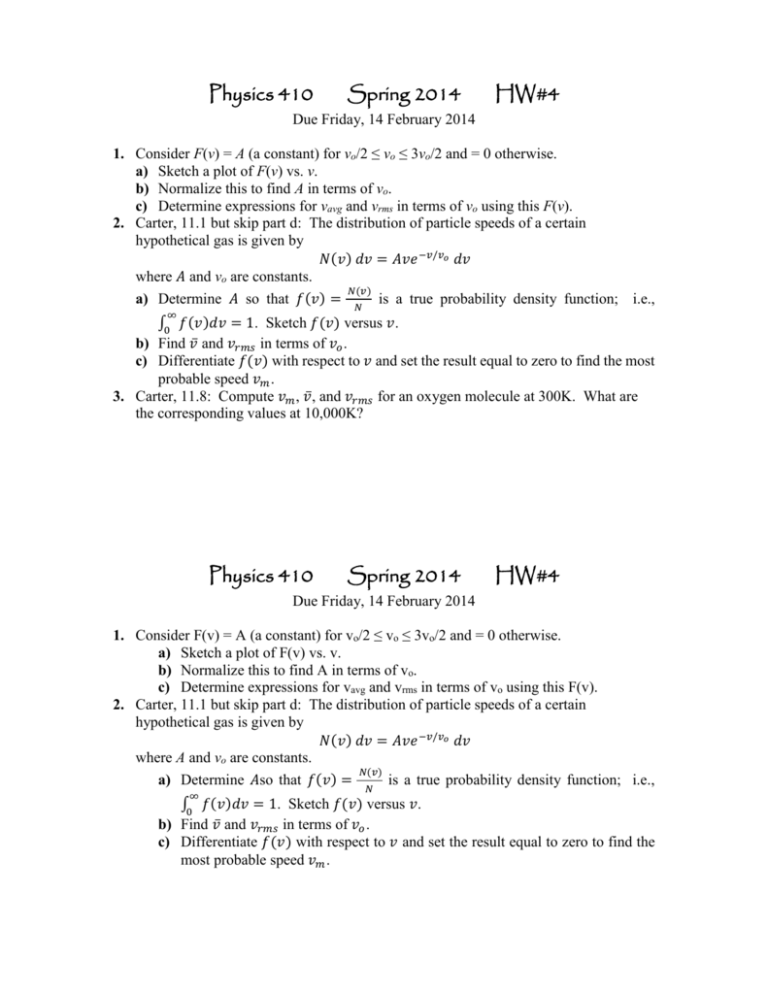
Physics 410 Spring 2014 HW#4 Due Friday, 14 February 2014 1. Consider F(v) = A (a constant) for vo/2 ≤ vo ≤ 3vo/2 and = 0 otherwise. a) Sketch a plot of F(v) vs. v. b) Normalize this to find A in terms of vo. c) Determine expressions for vavg and vrms in terms of vo using this F(v). 2. Carter, 11.1 but skip part d: The distribution of particle speeds of a certain hypothetical gas is given by 𝑁(𝑣) 𝑑𝑣 = 𝐴𝑣𝑒 −𝑣/𝑣𝑜 𝑑𝑣 where 𝐴 and vo are constants. 𝑁(𝑣) a) Determine 𝐴 so that 𝑓(𝑣) = 𝑁 is a true probability density function; i.e., ∞ ∫0 𝑓(𝑣)𝑑𝑣 = 1. Sketch 𝑓(𝑣) versus 𝑣. b) Find 𝑣̅ and 𝑣𝑟𝑚𝑠 in terms of 𝑣𝑜 . c) Differentiate 𝑓(𝑣) with respect to 𝑣 and set the result equal to zero to find the most probable speed 𝑣𝑚 . 3. Carter, 11.8: Compute 𝑣𝑚 , 𝑣̅ , and 𝑣𝑟𝑚𝑠 for an oxygen molecule at 300K. What are the corresponding values at 10,000K? Physics 410 Spring 2014 HW#4 Due Friday, 14 February 2014 1. Consider F(v) = A (a constant) for vo/2 ≤ vo ≤ 3vo/2 and = 0 otherwise. a) Sketch a plot of F(v) vs. v. b) Normalize this to find A in terms of vo. c) Determine expressions for vavg and vrms in terms of vo using this F(v). 2. Carter, 11.1 but skip part d: The distribution of particle speeds of a certain hypothetical gas is given by 𝑁(𝑣) 𝑑𝑣 = 𝐴𝑣𝑒 −𝑣/𝑣𝑜 𝑑𝑣 where A and vo are constants. 𝑁(𝑣) a) Determine 𝐴so that 𝑓(𝑣) = 𝑁 is a true probability density function; i.e., ∞ ∫0 𝑓(𝑣)𝑑𝑣 = 1. Sketch 𝑓(𝑣) versus 𝑣. b) Find 𝑣̅ and 𝑣𝑟𝑚𝑠 in terms of 𝑣𝑜 . c) Differentiate 𝑓(𝑣) with respect to 𝑣 and set the result equal to zero to find the most probable speed 𝑣𝑚 . 3. Carter, 11.8: Compute 𝑣𝑚 , 𝑣̅ , and 𝑣𝑟𝑚𝑠 for an oxygen molecule at 300K. What are the corresponding values at 10,000K?

